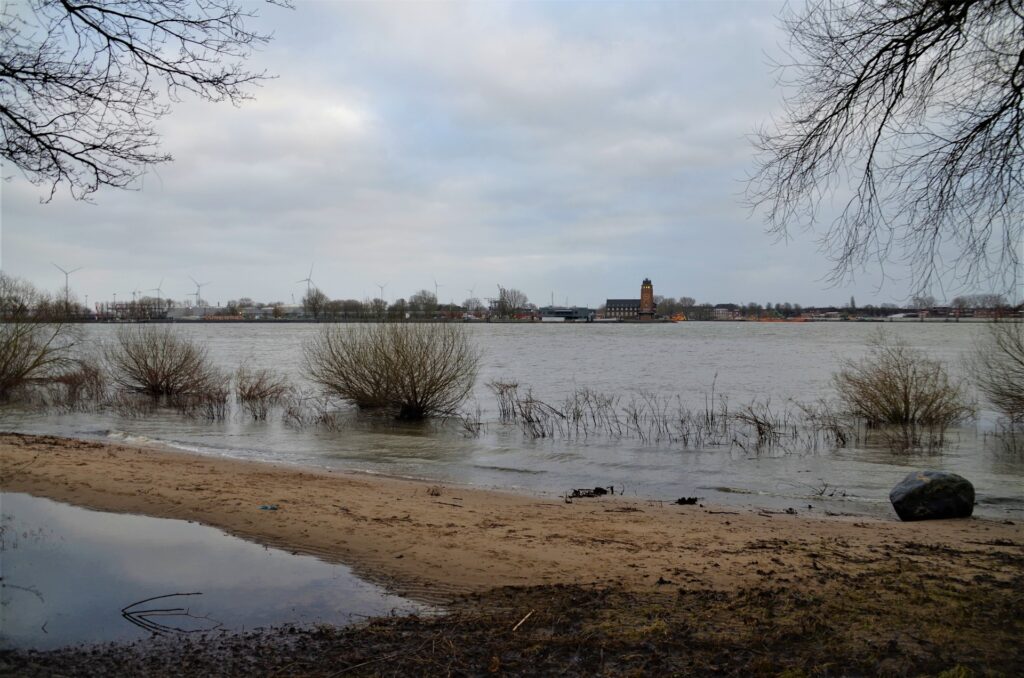Saltwater intrusion in the U.S.: a growing threat to water and wastewater utilities
Nobody likes getting a huge gulp of seawater. Not only is it not fun to drink, but it also has negative impacts on our health, infrastructure, and environment.
Saltwater intrusion – a phenomenon often referred to as “Slow poisoning” – is permeating fresh groundwater sources in the United States much faster than it has in past decades. Saltwater intrusion can be defined as the slow creep of seawater or water containing high salinity into sources such as wells, freshwater aquifers, and septic systems. Several east coast communities—including Hilton Head Island, SC, St. Augustine, FL, and Ocean City, MD are already facing managerial challenges from saltwater intrusion.
Though saltwater intrusion is a naturally occurring process, human influence and environmental changes cause saltwater to move into groundwater and drinking water sources at faster rates and in larger quantities.
Keep reading for a breakdown of saltwater intrusion, including what it is, its impacts on water and wastewater systems, and who is most at risk.
What does saltwater contamination look like and why is it dangerous?
Over the last few decades, accelerating droughts and longer and hotter heat waves have increased water demand and decreased water availability, making fresh drinking water more scarce and harder to get.
This often leaves us resorting to pumping in order to bring fresh water to the surface. Beneath the surface, repeated groundwater pumping removes water faster than the source can naturally replenish itself, creating pockets of depression around wells. This rapidly lowers aquifer freshwater levels and leaves room for saltwater to backflow into and contaminate groundwater sources.
An example of this can be seen in the Floridan aquifer system, which covers approximately 100,000 square miles of the southeastern United States. Over-extraction of the aquifer system is causing freshwater levels to fall. If the trend continues, saltwater intrusion will cause this major freshwater source to become contaminated.
As climate change contributes to sea level rise and more frequent occurrences of intense flood and storm surge events, the location where saltwater meets freshwater gets pushed back and progresses further upstream, increasing the salinity in groundwater aquifers.
As saltwater mixes with surface water and groundwater sources, the availability and quality of fresh water for drinking decreases. Though saltwater in low concentrations is not necessarily a health threat, high concentrations in drinking water can cause a number of health risks, including hypertension, increased risk of stroke, and heart attacks.
What are the effects on drinking & wastewater systems?
As less freshwater is available for drinking water operations, and desalination treatments (removing dissolved salts from freshwater sources) are costly, some utilities are forced to relocate their water intakes and decommission groundwater wells.
Wastewater systems located near the coast or within tidal zones are at greater risk for saltwater backflow due to sea level rise. The sudden overload of saltwater into sewage pumping stations can potentially cause wastewater to overflow into the environment.
When it comes to infrastructure, saltwater intrusion also affects the integrity of water and wastewater collection pipes. This is because increased salinity can change soil and groundwater characteristics, increasing the intensity and rate of collection pipe corrosion and generating a greater risk of odor and leakage.
Is your utility at risk?
Areas at a relatively high risk of saltwater intrusion include: locations with high well density, areas with high rates of pumping from a single well, locations where the groundwater level is at or below sea level, and coastal regions with a low to moderate slope.
Though it can be difficult to predict if your system will be impacted by saltwater intrusion, there are tools available to help assess the risk. For example, using the Sea Level Rise Viewer web mapping tool created by the National Oceanic and Atmospheric Administration (NOAA) can help you predict how sea level rise may impact your community.
For drinking water, wastewater, and stormwater utilities, the US Environmental Protection Agency (US EPA) offers an online Resilient Strategies Guide. This tool walks you through the adaptation planning process which includes identifying the most relevant priorities, assets, strategies, and potential funding sources.
Moving forward
There are many challenges utilities face in combating saltwater intrusion. They may need to relocate water intakes, abandon groundwater wells, develop alternative freshwater sources, and reduce the rate of groundwater pumping from coastal supply wells.
While more research and monitoring is needed to explore the impacts and prevention of saltwater intrusion, there are existing strategies to mitigate its impacts, including water reuse programs, implementing nature-based solutions, and upgrading existing infrastructure for assets like wastewater pumps.
As the risk of saltwater intrusion continues to rise, now is the time to identify possible challenges, evaluate utility operational capacities, and implement monitoring efforts. That way, we can seek out appropriate adaptation strategies to prevent saltwater from invading crucial freshwater resources while supporting water and wastewater facilities’ ability to provide safe and clean water for our communities.

